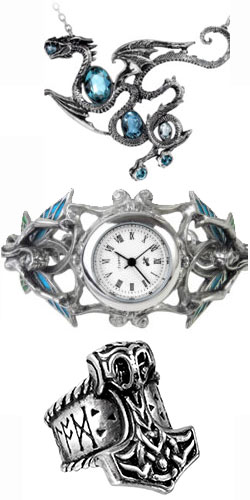How to Dress Renaissance
Renaissance Outfits Have Their Beginnings in Rome
Rome was the center of the world for seven hundred years. “All roads lead to Rome” is a phrase that resonates with truth in our culture. Every day we see and say remnants of the culture that has done more to influence Western Culture that any other on record. Although the dress of men and women today differs greatly from our ancestors many centuries ago, one area of dress has changed very little, and we can find it easily when we explore the Catholic Church, and the habits of the monks, clergy, and even now a few of the nunneries still in existence.
The English Medieval Monk (those existing in the time period between the fall of the Roman Empire to the beginning of the Renaissance) in the years AD 449–1500 had a very small and simple wardrobe that has changed very little over time, if at all. Clothing worn during this era (and in many cases since) have origins that began during the Roman occupation of Europe. A visit to a monastery today will show small changes have happened even in our times.
Habits, the name given to the medieval monks robe, varied in color according to their order. The earliest Benedictine monks wore clothing consisting of white or grey habits which were simply un-dyed wool. As time went by black became their prevailing color, hence the term “Black Monks” and finally “Benedictine Monks.” The Cistercian and Carthusian orders adhered to even stricter rules than the Benedictines and wore solely undyed wool to proclaim their poverty. Their habits were generally a grayish-white, and sometimes brown. The Cistercian monks were referred to as the “White Monks.”
Each Medieval monk had two tunics and two cowls, a scapular for work, one pair of shoes and a pair of stockings. The extra tunic allowed for washing. For some the second garment was used as “night-time” wear because the Cistercian monks slept in their habit.
A traditional habit for the Benedictine monk consisted of a tunic, tied around the waist with a cloth or leather belt. Over the tunic was a scapula consisting of a long wide piece of woolen cloth he wore over the shoulders with an opening for the head. The front of the scapula was secured with a small piece of rectangular cloth that snapped the sides together. A cowl or “hood” was attached to the scapula resulting in the phrase hooded cloaks. Simple shirts made from skin-irritating horse hair found their way underneath the most penitent.
During the Renaissance, some of the habits worn by monks became more comfortable and luxurious. The number of cloisters rose and the laxity for tasks relating to clergy increased. Luxury items were not excluded from certain monasteries and vows taken to heart in earlier times were sometimes easily broken. Sterling silver and 14-karat gold rings and crosses were not out of the ordinary in some orders; however “in the open public” these things were seldom mentioned.
Faith is something that cannot be ignored when observing the costumes worn by the clergy. Faith was everything. Simplicity in dress was a sign that poverty was an important virtue that was reflected in the everyday lives led by these highly religious men. They led by example. They faced daily life as a sacrifice given to God, and sought to exemplify purity in thought word and deed for his divine majesty.
Even though some monks began to long for finer monk clothing materials, most of the habits worn during these times are still simplistic in our eyes. They reflected a pious lifestyle; supposedly exemplifying the way Christ would want them to live their lives as his representatives on Earth.

